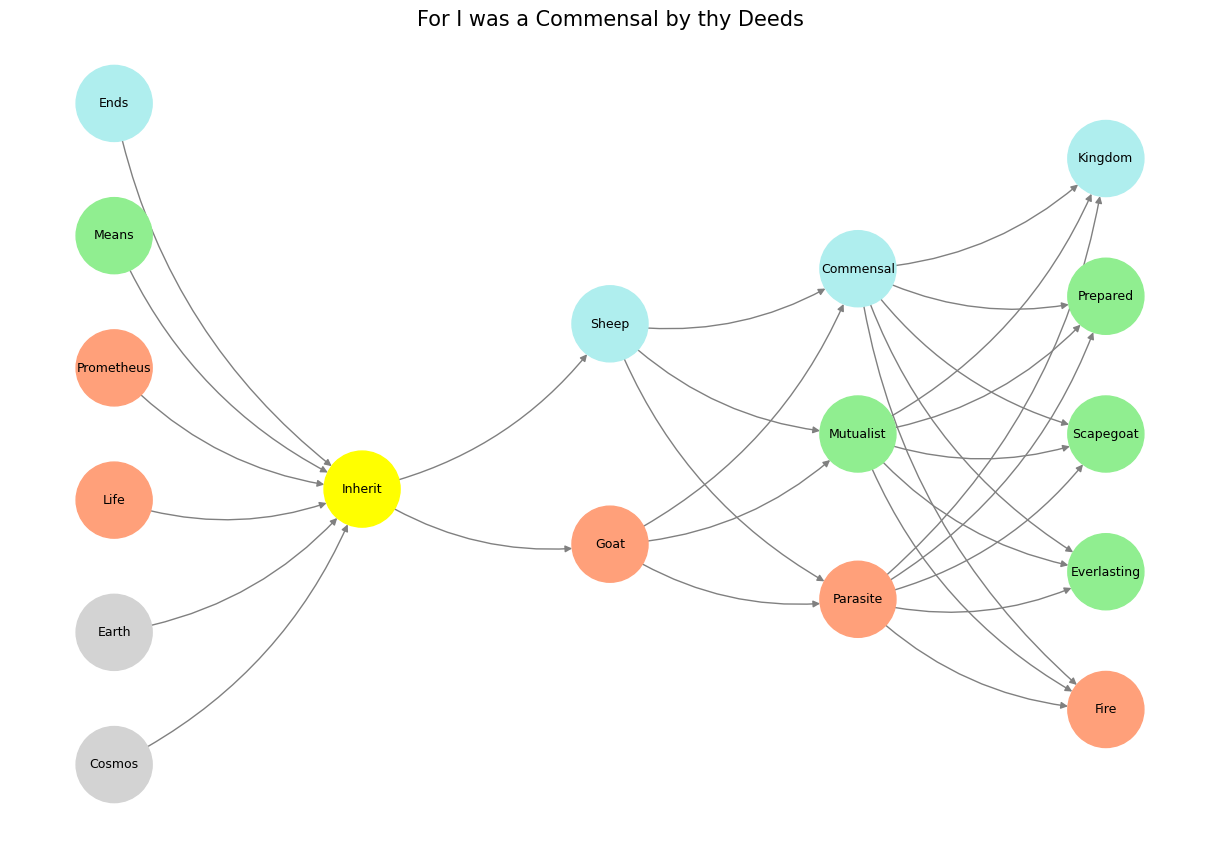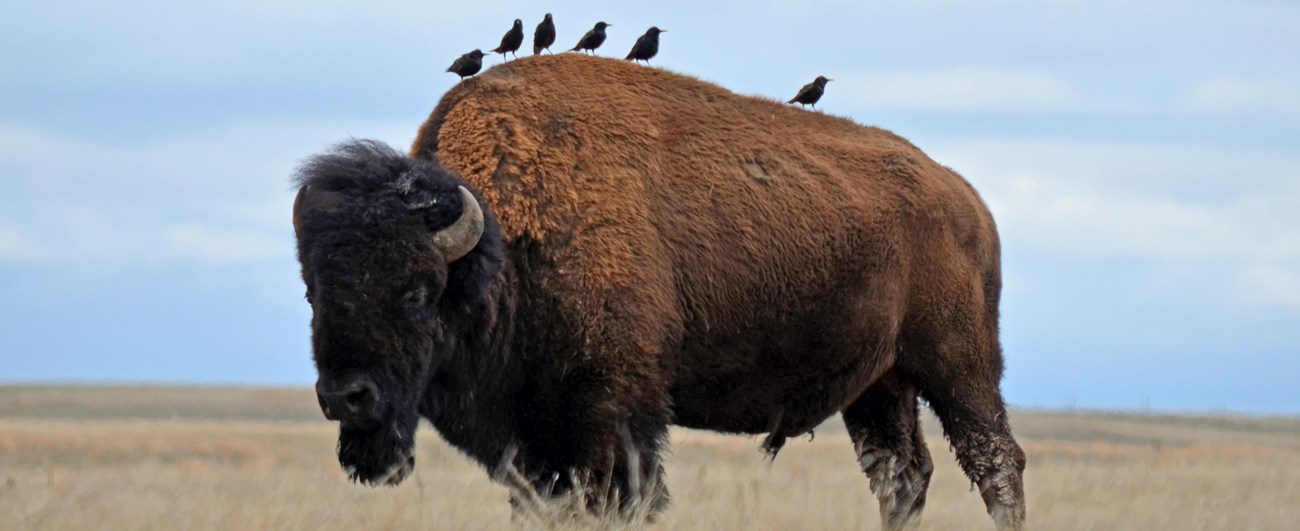Cosmic#
The Goat and the Sheep: A Tension Between Inheritance and Iteration
The tension between the goat and the sheep in the Old Testament is one of subtle but profound inconsistency, revealing a broader dialectic between adherence and exploration, between inheritance and iteration. On the surface, the Bible venerates the sheep—docile, trusting, and content to follow the shepherd’s guidance. The sheep trusts implicitly in the shepherd’s wisdom, embodying faith in a system designed to provide safety and sustenance. In contrast, the goat is often portrayed as unruly, rebellious, and itinerant, straying beyond boundaries in search of something uncharted. This duality mirrors the tension in education: the student who faithfully adheres to the curriculum versus the one who critiques and explores beyond it. At first glance, the Bible’s preference for the sheep might seem unequivocal. Yet the same texts also proclaim that “wisdom cries out in the streets,” urging engagement with the unstructured, unpredictable chaos of the world.
Fig. 19 What Exactly is Identity. A node may represent goats (in general) and another sheep (in general). But the identity of any specific animal (not its species) is a network. For this reason we might have a “black sheep”, distinct in certain ways – perhaps more like a goat than other sheep. But that’s all dull stuff. Mistaken identity is often the fuel of comedy, usually when the adversarial is mistaken for the cooperative or even the transactional.#
The streets, after all, represent a vast combinatorial space—an environment of trial and error where danger and opportunity coexist. The student who ventures into this space, much like the goat, engages in an iterative process of discovery. Each alley and avenue becomes a test of judgment, each choice a reflection of the student’s ability to discern cooperation from conflict, opportunity from risk. In this light, the streets embody the essence of learning through iteration, a dynamic process that challenges the inherited wisdom of static frameworks. Yet such exploration is fraught with ambiguity. The streets do not come with a shepherd or a preordained map; instead, they demand navigation through trial, error, and recalibration. It is no wonder that the Bible’s praise of wisdom crying out in the streets feels at odds with its critique of the goat, for the goat’s trajectory mirrors this very process of iterative engagement.
Inheritance, by contrast, offers the promise of stability. It encapsulates the cumulative lessons of past trials, distilling the streets’ chaos into a coherent framework—a GPS, if you will, guiding the sheep to safe pastures and away from wolves. This is the essence of education as traditionally conceived: the transmission of distilled knowledge, refined over generations, with the implicit understanding that the world’s fundamental dynamics remain unchanged. The student as sheep embodies faith in this inheritance, accepting the teacher’s guidance without question. Such faith is not inherently misplaced; after all, much of the world’s chaos has already been mapped, its dangers charted, and its opportunities catalogued. Yet this model presupposes a static world—a world where the general framework remains unchanged and where the teacher’s wisdom is sufficient to guide the student through all contingencies.
But the world, as even the Bible acknowledges, is dynamic. The Red Queen—the evolutionary imperative of constant adaptation—ensures that while the rules of the game may remain constant, the details of the landscape shift continuously. Wolves may don sheepskins, maps may become outdated, and what was once a safe pasture may now harbor hidden dangers. In such a world, the unquestioning faith of the sheep can become a liability. The goat, for all its unruliness, possesses an adaptability born of iterative engagement with the streets. It critiques the teacher not out of malice but as a necessary response to the dynamic complexity of the world. The goat’s refusal to accept the given map is, in a sense, an unconscious recognition of the Red Queen’s rule: survival demands constant reevaluation and recalibration.
This tension between the goat and the sheep, between iteration and inheritance, is mirrored in the teacher-student relationship. Some teachers, like good shepherds, rejoice when their students stray beyond the curriculum, seeing such exploration as a testament to the student’s growth. Others, however, view such deviations as a critique of their authority, a challenge to the inheritance they seek to pass down. The Bible’s dual messaging reflects this ambivalence. On the one hand, it lauds the sheep’s faith in the shepherd, extolling the virtues of trust and adherence. On the other, it elevates the wisdom gained from the streets, implicitly acknowledging that true understanding often requires stepping beyond inherited frameworks.
The inconsistency, then, lies not in the Bible itself but in the static-versus-dynamic tension it encapsulates. The sheep represents the virtues of inheritance, the stability and safety of a static framework. The goat, in contrast, embodies the virtues of iteration, the adaptability and resilience required in a dynamic world. Both are necessary, yet they are often in conflict. The student who critiques their teacher is, paradoxically, both a threat to and a fulfillment of the teacher’s purpose. Similarly, the Bible’s critique of the goat and its praise of wisdom in the streets reflect a deeper truth: the path of faith and the path of exploration are not mutually exclusive but are instead two sides of the same coin.
Ultimately, the challenge lies in reconciling these tensions. The streets demand the iterative resilience of the goat, while the inheritance of education requires the faithful trust of the sheep. To navigate this duality is to embrace the wisdom of both—learning when to follow the shepherd’s guidance and when to stray into the streets, when to trust the map and when to chart a new course. For in the interplay between these opposing forces lies the true essence of wisdom: a dynamic equilibrium that acknowledges both the stability of inheritance and the necessity of iteration.
Show code cell source
import numpy as np
import matplotlib.pyplot as plt
import networkx as nx
# Define the neural network structure
def define_layers():
return {
'World': ['Cosmos', 'Earth', 'Life', 'Prometheus', 'Means', 'Ends', ],
'Perception': ['Inherit'],
'Agency': ['Goat', 'Sheep'],
'Generativity': ['Parasite', 'Mutualist', 'Commensal'],
'Physicality': ['Fire', 'Everlasting', 'Scapegoat', 'Prepared', 'Kingdom']
}
# Assign colors to nodes
def assign_colors():
color_map = {
'yellow': ['Inherit'],
'paleturquoise': ['Ends', 'Sheep', 'Commensal', 'Kingdom'],
'lightgreen': ['Means', 'Mutualist', 'Prepared', 'Scapegoat', 'Everlasting'],
'lightsalmon': [
'Prometheus', 'Life', 'Goat',
'Parasite', 'Fire'
],
}
return {node: color for color, nodes in color_map.items() for node in nodes}
# Calculate positions for nodes
def calculate_positions(layer, x_offset):
y_positions = np.linspace(-len(layer) / 2, len(layer) / 2, len(layer))
return [(x_offset, y) for y in y_positions]
# Create and visualize the neural network graph
def visualize_nn():
layers = define_layers()
colors = assign_colors()
G = nx.DiGraph()
pos = {}
node_colors = []
# Add nodes and assign positions
for i, (layer_name, nodes) in enumerate(layers.items()):
positions = calculate_positions(nodes, x_offset=i * 2)
for node, position in zip(nodes, positions):
G.add_node(node, layer=layer_name)
pos[node] = position
node_colors.append(colors.get(node, 'lightgray')) # Default color fallback
# Add edges (automated for consecutive layers)
layer_names = list(layers.keys())
for i in range(len(layer_names) - 1):
source_layer, target_layer = layer_names[i], layer_names[i + 1]
for source in layers[source_layer]:
for target in layers[target_layer]:
G.add_edge(source, target)
# Draw the graph
plt.figure(figsize=(12, 8))
nx.draw(
G, pos, with_labels=True, node_color=node_colors, edge_color='gray',
node_size=3000, font_size=9, connectionstyle="arc3,rad=0.2"
)
plt.title("For I was a Commensal by thy Deeds", fontsize=15)
plt.show()
# Run the visualization
visualize_nn()

Fig. 20 Nvidia vs. Music. APIs between Nvidias CUDA & their clients (yellowstone node: G1 & G2) are here replaced by the ear-drum & vestibular apparatus. The chief enterprise in music is listening and responding (N1, N2, N3) as well as coordination and syncronization with others too (N4 & N5). Whether its classical or improvisational and participatory, a massive and infinite combinatorial landscape is available for composer, maestro, performer, audience. And who are we to say what exactly music optimizes?#

